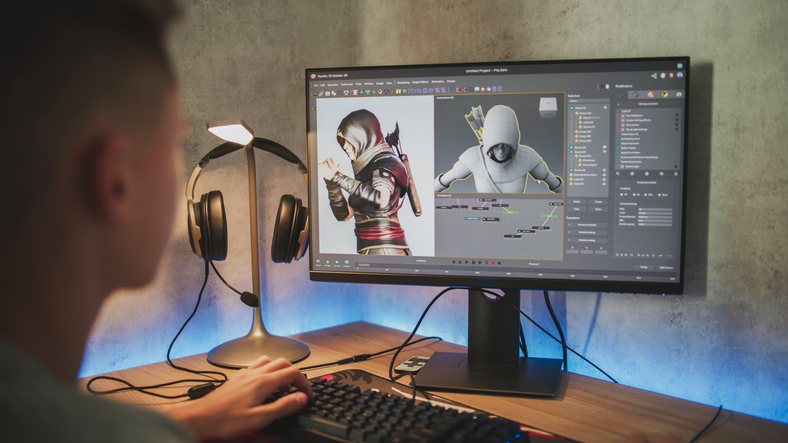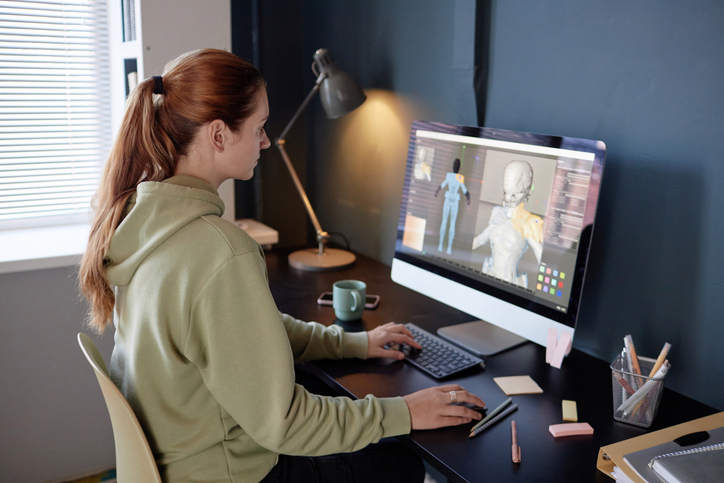When most people think about becoming an interior designer, they often picture years of university study, formal architecture courses, and stacks of textbooks. While that is one route, here is a refreshing truth yes, you can become an interior designer without a degree. In fact, many successful designers in Canada have launched their careers through alternative pathways that prioritize practical skills, creativity, and hands on experience.
Interior design is a dynamic and rewarding profession where passion, vision, and problem solving are just as important if not more than a formal degree. Whether you dream of transforming residential homes, creating sleek office spaces, or bringing life to retail stores, this article will walk you through how to get started in interior design without a traditional degree. We will also explore one of the most valuable options available today: the Interior Design Diploma at Visual College of Art and Design (VCAD) a flexible, comprehensive program tailored for individuals who want to enter the design world with confidence, without the four-year university track.
What is an Interior Designer?
Before we dive into the pathways, let us understand what interior designers do. An interior designer is a professional who plans, designs, and furnishes interior spaces in a way that makes them functional, aesthetically pleasing, and aligned with client needs. They do not just select paint colours or choose furniture they optimize layouts, consider lighting and acoustics, ensure safety and accessibility, and often work closely with architects, contractors, and clients throughout the design process.
Interior designers in Canada work in diverse environments, including residential, commercial, hospitality, healthcare, and institutional settings. Their work blends creativity with functionality, and they need to be skilled in both artistic design and technical execution. That includes using software like AutoCAD, SketchUp, and Revit, and understanding Canadian building codes, sustainability practices, and client collaboration. So, if you are passionate about design, creative problem solving, and making spaces come alive, interior design could be the perfect path for you and yes, you can pursue it without a degree.
Pathways to Become an Interior Designer Without a Degree
While having a degree can be helpful, it is not a legal requirement in Canada to become an interior designer, especially for entry level or residential design roles. Here are several practical and effective ways to start your journey to become an interior designer without following the traditional university route:
1. Learn the Fundamentals of Design
The first step is developing a strong understanding of design principles, spatial planning, balance, colour theory, and texture coordination. This can be done through self-study, online courses, books, YouTube tutorials, and more. Key areas to focus on include:
- Visual storytelling
- Furniture styles and materials
- Lighting techniques
- Sustainable and accessible design practices
While creativity can be innate, it can also be cultivated through consistent practice, exploration, and exposure to the design world.
2. Develop Technical and Software Skills
Interior design is increasingly digital. Most firms and clients expect designers to use tools like:
- AutoCAD for 2D drafting and layout plans
- SketchUp or Revit for 3D modelling and visualizations
- Adobe Photoshop for mood boards and concept presentations
You do not need a degree to learn these. There are countless online platforms that offer affordable, even free, courses in these tools. Mastering them can significantly boost your credibility and employability. VCAD’s Interior Design Diploma program also helps students to gain practical experience in AutoCAD, Adobe Photoshop, Adobe Indesign and more industry standard tools.
3. Gain Hands on Experience
Practical experience is often more valuable than formal education. Volunteering with a local designer, taking on small personal projects, or doing freelance work for family and friends can help you build confidence and credibility. Consider internships, apprenticeships, or part time roles with interior design firms, furniture stores, or property development companies. These will expose you to real world workflows, client interaction, and the business side of design.
4. Find a Mentor
Working under the guidance of an experienced designer can accelerate your learning curve. A mentor can offer career advice, feedback on your work, and networking opportunities. They can also help you understand industry challenges and trends, giving you a behind the scenes look at how projects come together from concept to completion.
5. Build a Professional Portfolio
In design, your portfolio is your résumé. A strong, well-organized portfolio shows your range, skills, and style to potential employers or clients. It should include:
- Renderings and mockups
- Mood boards and material samples
- Floor plans and 3D visuals
- Before and after project images (if applicable)
Even conceptual projects or designs done for fun can be included, just make sure they are high quality and display your potential.
6. Network and Stay Current
Interior design is a people driven industry. Attend trade shows, design expos, online forums, and networking events. Follow leading designers on social media, read trade magazines, and join Canadian design communities to stay inspired and informed about trends like sustainable design, smart home tech, or minimalist aesthetics. Social media platforms like Instagram and Pinterest are great for highlighting your work and connecting with others in the industry.
7. Pursue a Specialized Interior Design Diploma
One of the most effective ways to break into the industry without pursuing a degree is to complete a recognized diploma program like the Interior Design Diploma offered by VCAD.
Interior Design Diploma by VCAD: Your Gateway into the Industry
VCAD’s Interior Design Diploma is one of the pathways to launch your career in interior design in Canada. Designed with industry standards and practical skills in mind, the program is perfect for students looking to enter the design world quickly and professionally. Here is why it is an ideal alternative to a four-year university degree:
✔ Comprehensive Curriculum
The diploma covers everything from design theory and colour coordination to CAD software, architectural detailing, and sustainable practices. You will gain both the artistic and technical foundation necessary to thrive in the field.
✔ Hands on Software Training
You will learn to use industry standard tools like AutoCAD, Revit, SketchUp, and Adobe Creative Suite making you job ready from day one.
✔ Flexible Learning Options
With 100% online learning available, students can study at their own pace from anywhere in Canada. Prefer in person learning? VCAD also offers campus-based programs in Vancouver and Calgary.
✔ Professional Portfolio Development
Throughout your program, you will work on real design projects to build a professional grade portfolio as a critical asset for job applications and client pitches.
✔ Industry Connections & Career Readiness
VCAD integrates industry insights and career focused training. Graduates are well prepared to work in roles such as:
- Junior Interior Designer
- Space Planner
- Design Consultant
- Residential or Commercial Designer
- Freelance Designer
- Project Assistant in architecture or real estate
Why This Matters Now More Than Ever
The demand for game developers is skyrocketing but it is not the only creative field seeing explosive growth. The same trends driving that demand innovation, immersive environments, and a desire for tailored, individual experiences are also driving the demand for interior designers in Canada. As cities grow and real estate evolves, more Canadians are investing in their living and working environments. From home renovations and sustainable designs to customized office layouts, interior designers are becoming indispensable. The blend of art, technology, and human centered design means there has never been a better time to step into this profession. And thanks to programs like the Interior Design Diploma at VCAD, you do not need a university degree to do it.
Final Thoughts
So, can you become an interior designer without a degree? Absolutely. Success in interior design depends on your skills, your passion, your drive to learn, and how well you can turn a vision into reality. Whether you are self-taught, mentored, or enrolled in a diploma program, there are many legitimate pathways to becoming a designer in Canada. If you are ready to turn your creativity into a rewarding career without the burden of a traditional degree VCAD’s Interior Design Diploma could be your perfect starting point. With hands on training, flexible learning, and a direct line into the design industry, it is an investment in your future.
Interested in building beautiful spaces and a fulfilling design career? Explore the Interior Design Diploma at VCAD today and take the first step toward becoming the designer you were born to be.














